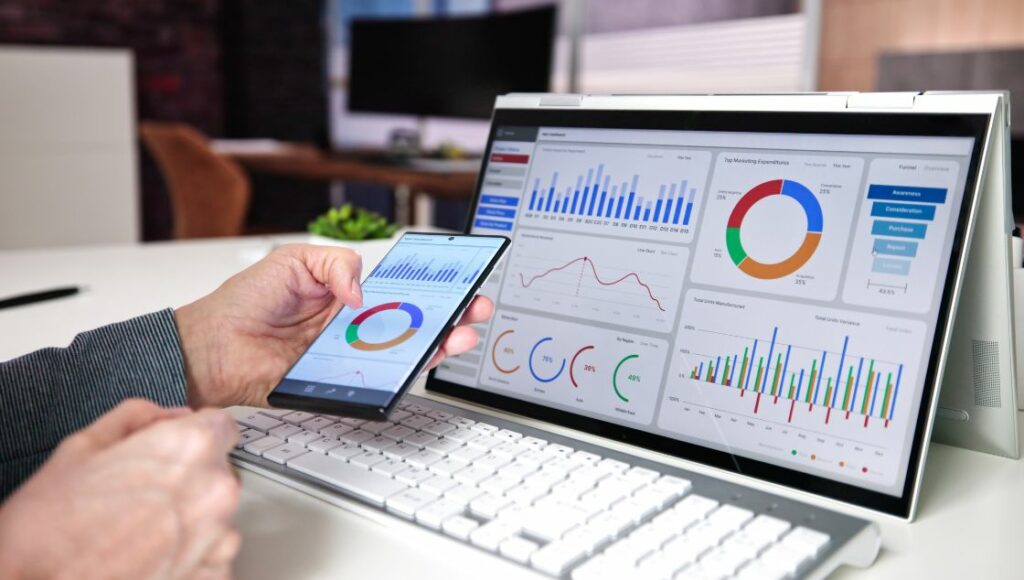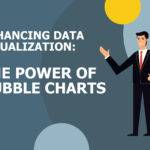Engage Audiences with 4 Visual Metaphors Built With Data Tools
Visuals can be powerful tools for communicating insights and engaging audiences. When data is visualized effectively, complex concepts become more accessible, and compelling stories can emerge. One technique that is especially useful for bringing data to life is the visual metaphor, which uses symbols and imagery to represent key data points and relationships.
In this blog, we’ll explore four visual metaphors that can be easily created using data visualization tools.
Understanding Visual Metaphors
A visual metaphor uses symbolic imagery to represent data in a creative, memorable way. For example, a line graph could show revenue over time as a downward pathway. Or a pie chart might depict market share with slices of pizza instead of abstract wedges.
Visual metaphors tap into the power of creative storytelling by associating data with relatable concepts. This helps audiences quickly grasp meaning and connect on an emotional level. Studies show that when information resonates emotionally, it is more likely to be internalized and recalled.
The key is choosing symbols and graphics that closely align with the message you want to convey. Metaphor usage makes data more engaging, persuasive, and impactful.
The Power of Data Tools in Creating Visual Metaphors

Advances in data representation software have made it easier than ever to turn spreadsheet numbers into vivid scenes that capture attention. Tools like Tableau, Power BI, and Infogram include pre-made options for various charts and graphs. Many also allow custom images to be uploaded and incorporated into views.
For example, geographic data could be represented as pins on a map; demographic data might appear as caricatures, and time-based metrics could take the shape of objects floating down a river. The possibilities are truly endless.
Data visualization platforms also include options to animate graphics to depict trends and changes over time. This motion and transformation can further enhance understanding and highlight key insights.
Four Visual Metaphors to Engage Your Audience
Here are four storytelling metaphors approaches to data visualization that are proven to resonate with audiences:
1. Story journeys
Graphics like pathways, roads, bridges, mountains, etc., symbolize progression. For example, a winding road could show customers’ progress from awareness to purchase, or route markers could indicate key milestones.
2. Characterizations
Anthropomorphize data by turning metrics into characters, creatures, or living things. For instance, animals with distinguishing features could represent different audience segments.
3. Analogies
Associate data with related physical objects. Bar graphs transformed into skyscrapers or histograms depicted as mountains leverage familiar shapes. Heat maps can become topographic terrain.
4. Scenes
Construct multidimensional vignettes, incorporating symbols, numbers, text, and artistic touches to create a snapshot. For example, key metrics could appear on the dials and displays of an illustrated control room, or data could be overlaid on the buildings of a city skyline.
Practical Tips for Integrating Visual Metaphors
When planning how to leverage visual metaphors best, consider the following tips:
- Align metaphors directly to key messages and insights you want viewers to grasp and recall. Choose graphics that closely match the meaning you aim to convey.
- Use natural, universally relatable scenes and symbols that will translate across cultural barriers. For example, use real-world landscapes, buildings, animals, or objects.
- Animated metaphors and animated transitions between slides/views can further accentuate messages and meaning.
- Color-code visuals and data points to reinforce connections and relationships. Vibrant palettes also capture interest.
- Label carefully to make sure the context and significance are completely clear. Text can direct interpretation.
- Evaluate if simpler is better. Overly ambitious visuals risk confusing audiences instead of enlightening them.
The Bottom Line
Skillfully integrating visual metaphors into data communication can profoundly impact audience engagement and understanding. By tapping into basic human affinity for imagery and storytelling, metrics transform into memorable narratives that inspire emotion and prompt action.
With the capabilities of modern data visualization tools, creating captivating, metaphorical views is easier than ever. Follow the guidelines mentioned above to develop visuals that effectively convey key insights and resonate powerfully with those you seek to inform, influence, and inspire.







